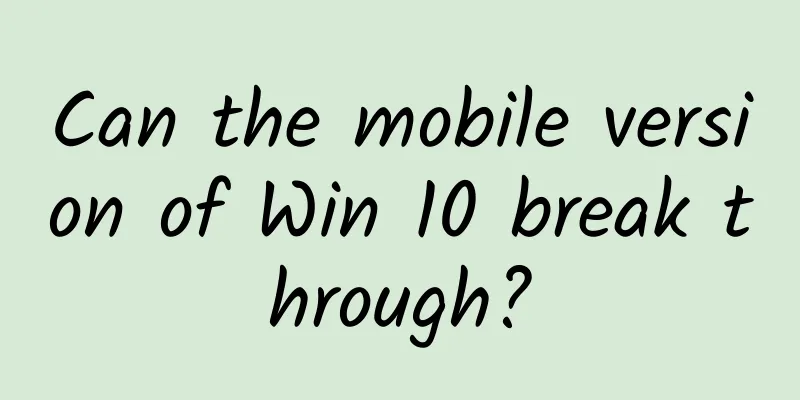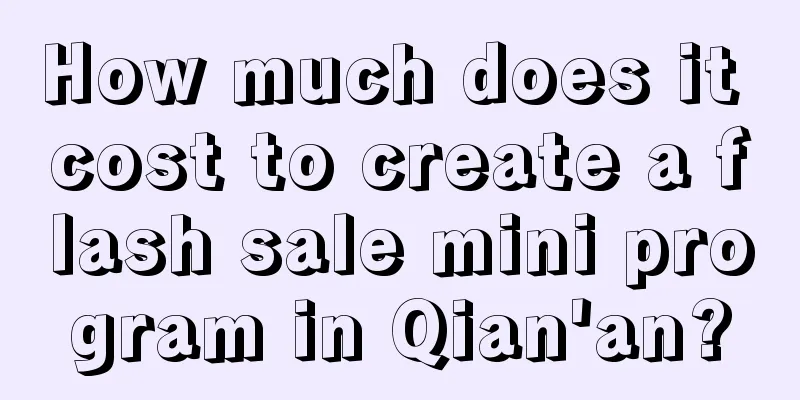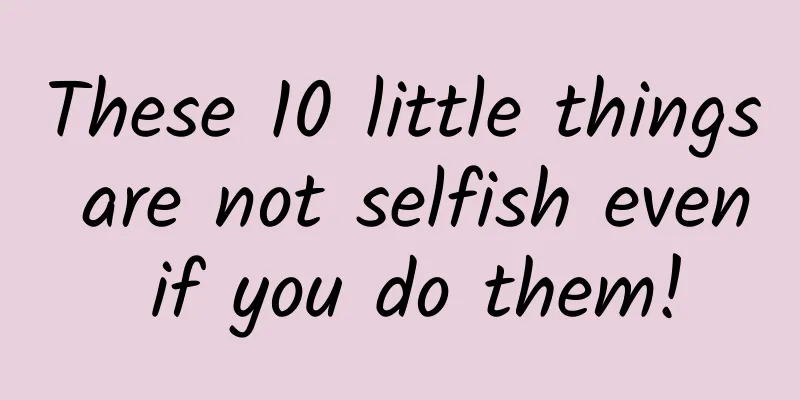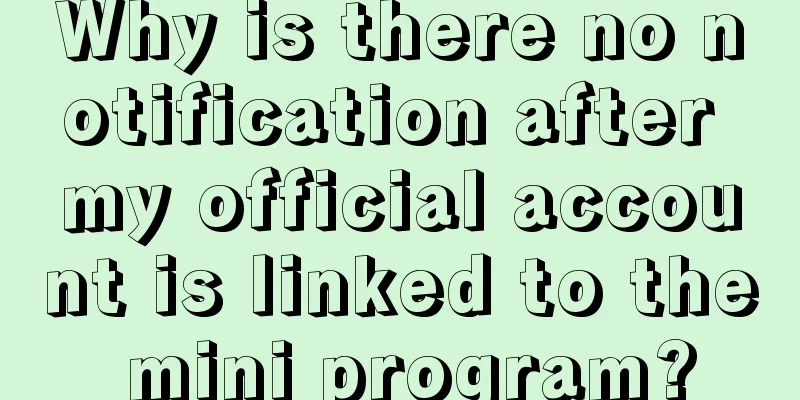Revealing the truth about not being able to grab red envelopes on Alipay, it's heartbreaking to read

On February 11, 2015 , Alipay distributed red envelopes to people across the country, creating a very lively atmosphere.Some people were having a great time grabbing red envelopes, some were showing off their red envelopes until their hands were tired, and some were busy for a long time but didn't get any red envelopes, and swore that they would never believe in love again. In my opinion, Alipay red envelopes have already achieved half of their success by attracting attention and participation from a huge user base, but the other half is questionable. Otherwise, there would not be such doubts among Zhihu users: Is Alipay’s New Year’s Red Packet a scam? No one I know has grabbed it.How should Alipay red envelopes be made so that they don’t look like a scam?This starts with the nature of operations and promotion activities. In short, the goal of good operations is to "spend the least money and do the most work." From this perspective, Alipay red envelopes are a very successful case. With a cost of less than 300 million yuan, they bombarded the circle of friends, attracted a lot of attention, and created a good communication effect. In the battleground of "mobile payment", the two goals of "attracting new users" and "increasing the stickiness of old users" have been achieved. So what are its limitations?In fact, this is a problem that all operations have to face, which is "limited budget". The number of Alipay users reached 800 million in December 2012 (data source: Wikipedia). Even if only 10% of these users participated in the red envelope grabbing activity, based on the total number of 30 million red envelopes on February 11, each person could only get an average of "40 cents in red envelopes." If 40 cents is really divided equally among each user, some anxious friends may even want to smash their phones. Here comes the question:When "limited budget" encounters "huge user base", how to achieve "good communication effect"?Let me tell you my thoughts: The 130 million budget is divided into two parts. 2. A portion of it is used to generate "high-value red envelopes" with amounts ranging from two to four digits, which are distributed to "high-influence users" through algorithms. 3. The other part is used to generate "small red envelopes", ranging from a few cents to a few yuan, and randomly distributed to "ordinary influential users". High-influence users are content producers and opinion leaders on social networks identified by the system through algorithms. They are also the “Innovators” and “Early Adopters” mentioned in the book “The Tipping Point”, as shown in the figure below. After these users receive high-value red envelopes, if they share them on social networks, it will produce a much greater communication effect than ordinary influential users. This is also the user group that operators need to pay special attention to. Image source: Wikipedia Ordinary influential users will be randomly given small red envelopes. Every penny is spent wisely, this is the effect we want. After this analysis, another interesting topic comes up: how to identify “high-influence users”?Tencent has a natural advantage in this area because the value of WeChat is the "Chinese social relationship map" behind it. By judging the three indicators of the number of friends, the number of original messages, and the number of forwarded messages, it is easy to identify "high-influence users." However, Alibaba is naturally lacking in this area. The value of Alipay lies in the "China Transaction Relationship Map" behind it, but it is difficult to identify high-influence users based on this map. The way I can think of is probably to judge "high net worth users" through user transaction behavior, and at the same time assume that "high net worth users" and "high influence users" have a high degree of overlap, and indirectly identify "high influence users". Alibaba has long been aware of its shortcomings, and even tried to make up for them in this Alipay red envelope activity. What do you think?Yes, it is the "red envelope chain". The "red envelope flow" in the last picture below reveals Alibaba's intentions. The social relationship graph is exactly what Alibaba lacks and what Tencent least wants Alibaba to have. However, WeChat can prohibit direct sharing through Alipay, but it cannot prohibit users from sharing pictures. "Red Packet Chain" uses WeChat's channels to circumvent WeChat's ban by sharing pictures and entering passwords, and indirectly copies WeChat's core asset, the "social relationship graph." In a word, the "Red Packet Chain" is Alibaba's naked attempt to poach employees from Tencent. By the way, the fierce competition between Alibaba and Tencent in various fields is essentially a game between two basic human behaviors: "social" and "transaction". In this process, Baidu, one of the three BAT companies, has gradually been forgotten. If Baidu does not attack, the three-way competition may be replaced by two strong competitors. This speed may be very fast. For those friends who have grabbed a few cents or a few dollars in red envelopes, my advice is to work hard to become a "high-impact user", so that the next big red envelope will not be far away from you. More likely, by then, you no longer care about these red envelopes at all. |
<<: Xiaohongshu KOL promotion: the secret of note ranking and weight algorithm!
>>: How to improve user activity of products?
Recommend
Paul Dirac: You'll Never Walk Alone
Dirac is a unique figure in the history of scienc...
Sony HT-S500RF review: Turn your living room into a home theater in seconds with a 5.1-channel soundbar
If you want to turn your living room into a home ...
9 things you need to know about Google IO 2015
[[135288]] 1 Google officially releases Android M...
Why I still prefer Eclipse to IntelliJ IDEA
Over the years, I've seen a trend of moving f...
Product promotion: How to advertise?
A very important part of advertising is the selec...
Beware of red envelope scam! The gang lied and borrowed WeChat accounts to send red envelopes and made a profit of over 400,000
In recent years, telecom fraud crimes have become...
10 minutes to understand the optimization techniques of information flow advertising copy
In early February, Facebook released its full-yea...
Mixed infection has occurred! Many places have issued reminders: Wear a mask!
Fever, cough, sore throat... With the arrival of ...
Where is the entrance to Tik Tok’s huge Qianchuan app? FAQs
In addition to promotion on Douyin, some business...
Watch the best TV shows on your tablet Mango TV client dual platform experience
From the old "Happy Camp" to the recentl...
"I'm so scared of thunder"... How many people were woken up by thunder this morning? How to prevent all-around cold air?
How many people were "woken up" by the ...
iPhone 6s internal chip revealed: there is still a 16GB version
Previously, the foreign website 9to5Mac got the i...
2021 Douyin live broadcast new trend: Enterprise self-broadcasting anti-scam guide
Douyin’s e-commerce trend has made Luo Yonghao, B...
Ten Years of Litigation: iPod DRM, Jobs, and 8 Million Users
[[123745]] Old iPod users may remember that Apple...
Solid coal turns into liquid fuel? This 100 billion-dollar project in China gives you the answer →
Author: Shi Xiangqi and Li Chuanfu On October 8, ...









